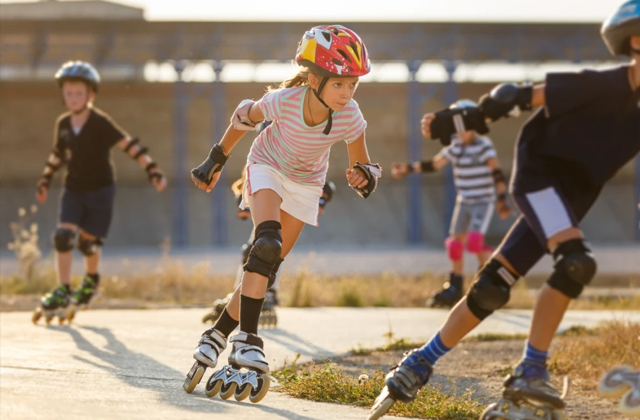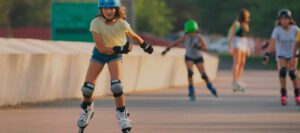Roller skating is a fun and exhilarating activity for kids that encourages physical activity and helps improve balance and coordination. When introducing roller sports to a child, parents often first decide whether to choose roller skates or roller blades (inline skates). Additionally, understanding how to teach a child to skate is crucial for a safe and enjoyable experience. In this blog, 5.10.15, explore the factors to consider when selecting roller skates and roller blades for a child, and we’ll provide helpful tips on teaching a child to skate.
Roller Skates vs. Roller Blades: Making the Right Choice
Stability and Balance: Roller skates have four wheels arranged in a square pattern, offering better stability and balance, making them an excellent choice for younger children and beginners. On the other hand, rollerblades have a single line of wheels, providing greater maneuverability and speed, making them suitable for older kids with more experience.
Learning Curve: For younger children around 5, roller skates are generally easier to learn. The 5.10.15 four-wheel configuration provides a more stable base, helping young kids gain confidence quickly. As children reach age 10 and become more adept at skating, transitioning to rollerblades becomes more feasible as they develop better balance and control.
Terrain and Purpose: Consider the terrain where your child will be skating. Roller skates are more suitable for outdoor surfaces like parks and sidewalks, while roller blades excel on smoother surfaces like indoor rinks. Also, consider the intended purpose, as roller skates are ideal for recreational skating and casual rides, while roller blades are often preferred for more dynamic and aggressive skating styles.
How To Teach A Child To RollerBlade?
It is advisable to start your child’s skating lessons when they are 4-5 years old. Naturally, the child’s well-developed motor coordination will be a must. The most crucial factor in choosing the proper skating surface is that it not be too rough, as this will help prevent painful falls. The ground should not be excessively slick because if it is, the wheels would automatically disengage, making it challenging to maintain balance. Additionally, picking a location where there are few people will allow the child to have unrestricted freedom.
Maintaining the proper posture, with your knees bent and your hands resting on them, is the first step in learning. The skates should be set straight and parallel to each other, and the youngster should assume this position to avoid twisting the legs at the ankles and knees. Learning to roll over and stand up is the next milestone. The youngster must practice falling from the squat posture while wearing a helmet that will protect their head and protection on their knees and elbows.
You can now begin practicing skating while walking. The young skater must position their skates in a V shape so that their heels touch before cautiously moving forward. When stepping, ensure the 5.10.15 roller wheels are in contact with the ground. The infant must always keep a little bent posture, which is crucial.
Your comfort won’t start to accelerate until this step is complete. The greatest way to teach a youngster to transition smoothly from a bent to an upright position is to combine riding with slow steps.
What To Choose For A Child?
Rollerblading or roller skating is fun and will improve the child’s overall figure. During this exercise, keep your child’s security in mind. If you need assistance choosing the right helmet for you, see our topic about cycling helmets. On 5.10.15, purchase specialized sports equipment for your child from our store. Various options include multifunctional skates, roller skates, and more. Please familiarize yourself with the current offer, as we kindly request!





